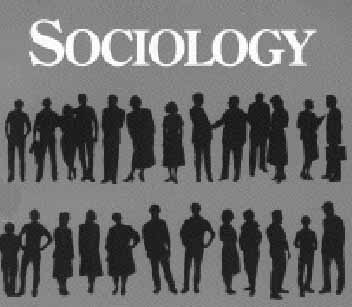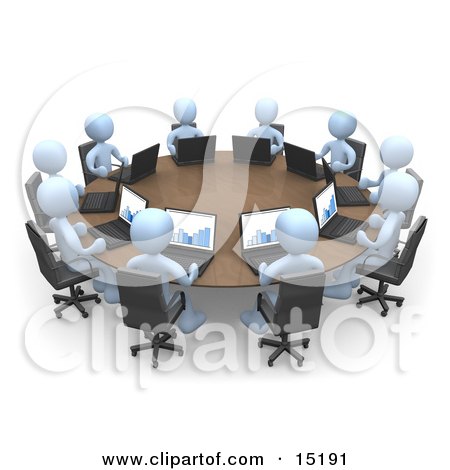Serendip is an independent site partnering with faculty at multiple colleges and universities around the world. Happy exploring!
Taking Information Seriously: final paper/ event

Apocalipsis Rosario & Sadie Mahmoud
ENGL 257: Gender & Technology, Final Web-Event, April 26, 2011
Taking Information Seriously
Bryn Mawr College’s course, "GIST: An Exploration of Gender, Information, Science and Technology,” provided students with the opportunity to go beyond writing typical academic papers. As a way of studying the entanglements of gender, information, science and technology (GIST), students explored non-traditional forms of research and presentation. For one of our course papers posted on the web, we (Apocalipsis and tangerines) collaborated on a web-paper. We met to discuss our ideas for the direction of the skit, and each wrote a few pages and then met several more times to put the skit together and discuss the various components of the skit. We came to realize that not only were the characters and plot evolving, but our own understanding of the themes of the course had also begun to evolve. Instead of writing a paper oriented around facts, we applied and described what we have been learning about the relationships of GIST according to specific cultures, and in the world in general.
In a lively class panel on 3.30.11, each student performed the identity of an expert speaking for a group. The purpose was to represent a group whose lives, work, or circumstances shaped, or were impacted by, an intersection of the course theme. In this panel, cara [/exchange/user/837] discussed the relevance of the inhabitants of Guiyu, China and the profound effects of electronic waste on their lives. This led to a conversation on the possible implications arising from the natural disaster in Japan. The skit creates an atmosphere in which a group of scientists carefully selected by an NGO collaborate to establish an agenda detailing how to address the tsunami in terms of the allocation of resources, whether the resources be funding, man-power or architectural support.
After meeting with Anne, one of the course instructors, Apocalipsis configured began brainstorming the skit to encompass four types of science and manifested them through the careers of the individual characters. Those fields included life science (geologist), social science (sociologist/psychologist), information science (librarian and information preservation), and humanism. Taking creative writing courses provided us with the skills to develop a plot and characters. The varied ages of the characters allows the audience to understand their personalities in terms of their interactions.
For example, David, the humanist, is able to authoritatively negotiate with the other characters as he is not only the eldest, but also the leader of the emergency response team. Mary, on the other hand, is the youngest member of the team and is feistier than the rest. Because of her youth, she feels that she must be firm in order to be heard. Pedro, the geologist, comes from a field of science which relies on and privileges empirical data. Mark, the social scientist, finds himself in the middle as he is most concerned with the mental health of the Japanese people and their social interactions. Initially, the skit was formatted to privilege Pedro’s life science expertise. However, after the second class panel where m.aghazarian represented people with the Masters of Library and Informational Science degree, our view of information expanded. We transitioned from thinking of information as merely the processing of noise and began to understand the importance of information itself
In addition to considering the importance of information, while writing the skit, we struggled to maintain a balance between history and embellishment. Because we wrote the skit a couple of days after the occurrence of the tsunami in Japan, all of the statistics used were either constantly changing or unavailable. We had to strike a balance between staying true to our vision for the skit and accurately representing the devastation caused by the tsunami. In the end we decided that in the context of the skit, loyalty to the concerns of the sciences we represented was our priority. For example, although each character makes it clear that he or she wants to get food and medical supplies to those in need, each also focuses on his or her prime area of professional concern.
During our first discussion on how to stage the performance, we envisioned a large stage facing the audience. We wanted the characters to be separated by distance but connected through technology (in keeping with yet another theme of the course), and the entire debate would take place via online video chat. We aimed to block the set so that the characters were in conversation with one another but also spatially disconnected. This physical separation represented not only their geographical distance but also the gaps of understanding between them, as characters attempted to use their very different bases of knowledge for one common goal.
Our first idea was to have the characters sitting at a table, each facing the audience and interacting with a computer in front of them. The characters addressed their arguments to their computers rather than to each other, which represented the technological barrier. However, we then developed the idea to record our performance, and this complicated matters. Apocalipsis suggested that we have the characters, with laptops or computers, sit in a circle facing inwards, with the recording device in the middle and turning to focus on each character as he or she spoke. Then, when we decided to perform part of the skit for our final class presentation, Anne suggested that each of the performers sit in the middle of the classroom, surrounded by our audience. Apocalipsis thought it would also be a good idea for the performers to sit in a circle facing outward. This staging represented the distance and disconnect between the characters despite the closeness of their seats, which was a concession to the limited space. Although we could not record the performance in the way we had planned, the audience was able to see all of the performers and hear all of the lines.

Information is perhaps the most fascinating theme of the course. As we finished writing the skit, we discovered that Mary, the information scientist, played the most crucial role. Rather than highlighting the importance of life science, as we thought our skit would do, our research pointed to the significance of information and its transmission.
There was a similar earthquake in Japan in 1995, and although scientists at the time had found that rebuilding on higher ground would be more structurally sound in the event of another earthquake, these architectural changes were not implemented. This is perhaps one of the reasons the 2011 earthquake was so devastating. Learning about this made us realize the importance of preserving information in addition to transmitting it.
Our class discussions focused on defining information and analyzing its transmission. The class seemed to conclude that we filter noise into categories which allow us to derive meaning from it We also talked about the idea that what constitutes information depends on one's opinion and specific life experiences. While we agreed with these general ideas, in light of our research on the Japanese earthquake, we took a slightly different direction with our project. We decided that information is not useful unless it is preserved and made accessible. Although each theme of our class is important in its own way, we realized that information is the basis for the existence of the other fields.
This course raised many issues for us, but the one which interested us the most – and which we chose to explore via our skit – is information and its transfer. The skit really focuses on the themes of science, technology, and information. Technology is bound up in the very specific manner in which the characters interact – via video chat. In class we discussed how technology can bring us closer to others while simultaneously creating barriers between people. We chose to have the characters interact with technology to demonstrate its connective power – but in staging the skit, showed how the characters were still very separate from one another as well. The skit also deals with science in that each of the four characters represents a very different field, yet all can be considered forms of science. The intersections of these different types of science is explored in the debate between the four experts, which represented our changing perspectives on how the sciences interact and fit together. Information plays a major role in our skit because information came to be the most important of the sciences to us as we finished writing the play.
We came to understand that information is the framework within which the other themes of the skit and the course intersect. And finally, gender also factors into our skit, albeit in a lesser way. Although we have a cast of four characters, only one of these is a woman, which represents the lack of women in the sciences. However, perhaps because we are biased as Bryn Mawr women, the single female character actually has the greatest impact on the debate.








